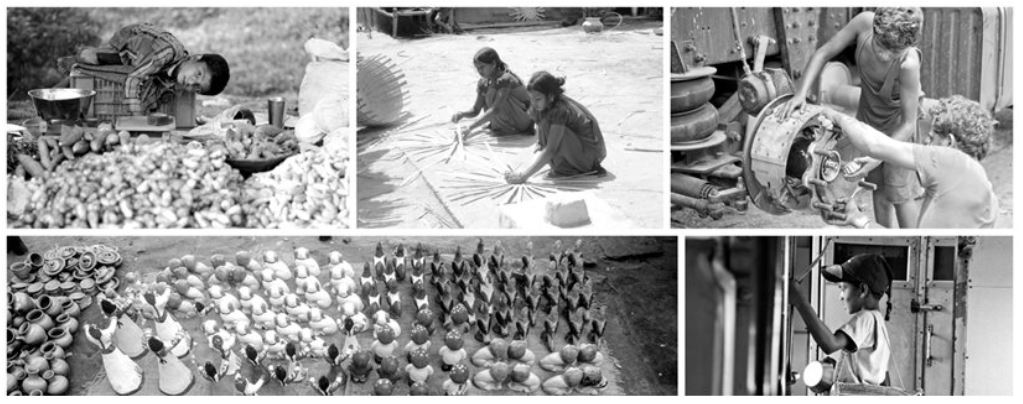
More than 200 million children worldwide are still working as child labourers and a staggering 115 million at least, are subject to its worst forms. As per the National Census 2011, there are close to 10.1 million child labourers in India, in the age group of 5 to 14 years.
- 10.13 million child labourers between 5-14 years in India (2011 Census data)
- Child labour in 2011 has decreased by around 20% from 2001 Census Figures
- There are 22.87 million working children in India between 15-18 years.
- As per 2011 Census, 1 in 11 children are working in India (5-18 years)
- 80% of the child labour in India is concentrated in rural areas
- ILO 2016 data indicates that there are 152 million working children in the world between 5-17 years, of which 23.8 million children are in India. So 16% of the working children (or every 6th working child) in this age group is in India
About 1.4 million child labourers in India in the age group of 7-14 years can’t write their names, analysis of Census data. This means one in three child labourers in the said age group are illiterate. This is the grim reality of children who work for more than six months in a year. Even for children who support the family economy by working for less than six months in a year, which is very common in a country like India, the situation is equally, if not more, worse. A shocking 2 million of these marginal workers have compromised their education as well.
There is a high potential of early school leavers and those not learning at school to remain outside the world of formal employment. These children when they grow remain at a risk of not having secured jobs and thus remain trapped in the intergenerational cycle of poverty and deprivation. It is imperative to relook at what we as a nation are investing in our children’s education. It has been a decade since the notification of the Right of Children to Free and Compulsory Education (RTE) Act, 2009 and it is crucial that its implementation is strengthened. The ambit of the RTE Act, 2009 must be expanded to from pre-school to secondary level (for children aged 3 years – 18 years) in order to address this issue.
The situation is also reflected in the state figures. While 45% of child labourers in Bihar are illiterate, in Rajasthan and Jharkhand the figure stands at 40%. Madhya Pradesh and Andhra Pradesh also have about 38% child labourers as illiterate.
With the education indicators for these children plummeting, the reasons why we face this challenge needs to be addressed. India’s present legal framework is based on the assumption that children can work and study simultaneously. The numbers stated earlier blatantly contradict this assumption and are evidence enough that this needs to change, for main as well as marginal child labourers. In 2016, the Child Labour (Prohibition and Regulation) Act, 1986 was amended by which the law bans child labour (i.e. those below14 years) and links the to the age of entry into employment with the age of completion of elementary education (14 years) guaranteed by the Right to Education Act (RTE), 2009. However, it makes certain exceptions for children in this age group and allows them to ‘help’ family and in family enterprises, and as child artists, after school hours or during vacations.
The Census 2011 data for children in labour, states that 6.5 million children in India in the age group of 5 to 14 years work in agriculture and household industries. This makes a staggering 64.1% of child laborers in this age group. Search my child’s on ground experience reveals that a large number of children engaged in these occupations are working with their families. Allowing children to work in family enterprises is likely to have far reaching implications affecting not only their education and learning outcomes but also their health and overall development. Therefore, there is an urgent need to revisit the law in the interest of all children.
Child labour in India, somehow, has become a social norm that we accept and tolerate in our society. This exploitative and abusive practice will continue unless society adopts a zero tolerance attitude towards it. Children continue to be exploited and abused because the State and people do not address children’s issues comprehensively and effectively.
However, only ‘rescuing’ children, often will not help. What is required is addressing the reasons that force children to work. Children work mainly to help their families because the adults do not have appropriate employment and adequate income. Children also work because there is a demand for cheap labour in the market. When children are forced to work long hours their ability to get adequate nourishment and to attend school is limited, preventing them from gaining education.
